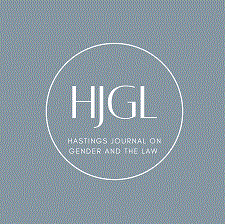
Abstract
Growing evidence in medical research suggests a gender bias against women, particularly in the area of coronary heart disease (CHD). This disparity exists at all levels of health care delivery from office visits to inhospital care. Gender bias may result in delayed or inaccurate diagnosis, unequal medical interventions, and higher mortality for women who undergo invasive cardiac and surgical procedures.} While research conducted in other areas of medical care indicate a bias against women,2 recent research in cardiac care presents the most worrisome evidence to date that women are dying because physicians fail to timely diagnose and treat CHD as aggressively as they do in men. Part I of this note explores early recognition of gender bias and research in the 1970s and early 1980s. During this period, researchers attempted to explain why gender bias exists. Today researchers remain unable to account for many inequities, but offer several theories to explain its existence. Part I examines the attitudes of health care providers, specifically as they relate to the gender of the patient in relation to the gender of the physician. Part I also examines the disproportionate effect of gender bias on older women. The male model of health care is offered as the vehicle of discrimination against women. Part IT examines gender bias in CHD, beginning with delayed or inaccurate diagnosis of angina (chest pain) associated with CHD. Further, this section examines why women are not offered early access to diagnostic procedures for CHD. When procedures are offered, the results may not have the same meaning for women as for men. Research suggests that women diagnosed with myocardial infarction have a higher mortality than men. Delayed access to interventions such as thrombolysis, angioplasty, and coronary artery bypass grafting results in higher mortality for women. Finally, extrapolation from all-male clinical testing of drugs results in different outcomes for women in the primary prevention of CHD. Part ill examines the legal ramifications of unequal care for women who have CHD and whether this violates the equal protection clause of the Fourteenth Amendment to the United States Constitution. Since almost every major hospital providing cardiac intervention and care in the United States receives federal and state funding via Medicare and Medicaid, these health providers may not discriminate in access to or provision of medical care. Gender bias against women may also violate other federal and state statutes. Part IV explores solutions to this gender bias. First, the National Institute of Health (NIH) must be forced to live up to their promise to increase funding for women's issues. In response to the U.S. Public Health Service's Task Force on Women's Health Issues in 1985,3 NIH promised to increase funding to study women's health issues.4 However, as of June 1990, nearly three years after this promise, the General Accounting Office reported NIH had made very little progress toward this end.5 Second, medical schools should be encouraged to change the male-centered medical model to a male/female medical model. Finally, the American Medical Women's Association should continue to encourage the medical community to develop a women's specialty in medicine. Parting out women's health care between the family practitioner or internist and the obstetriciangynecologist may not provide comprehensive health care for women.· In conclusion, the "why" of gender discrimination is least important. Our priority in research should be to identify when it occurs, and take measures to see that it ceases. The Council on Ethical and Judicial Affairs of the American Medical Association reports, ''The medical community cannot tolerate any discrepancy in the provision of care that is not based on appropriate biological or medical indications.,,6 The long-term quality of life and health of women depend on finding a solution to this problem.
Recommended Citation
Carol Joann Bess,
Gender Bias in Health: A Life or Death Issue for Woman with Coronary Heart Disease ,
6 Hastings Women's L.J. 41
(1995).
Available at: https://repository.uclawsf.edu/hwlj/vol6/iss1/3

